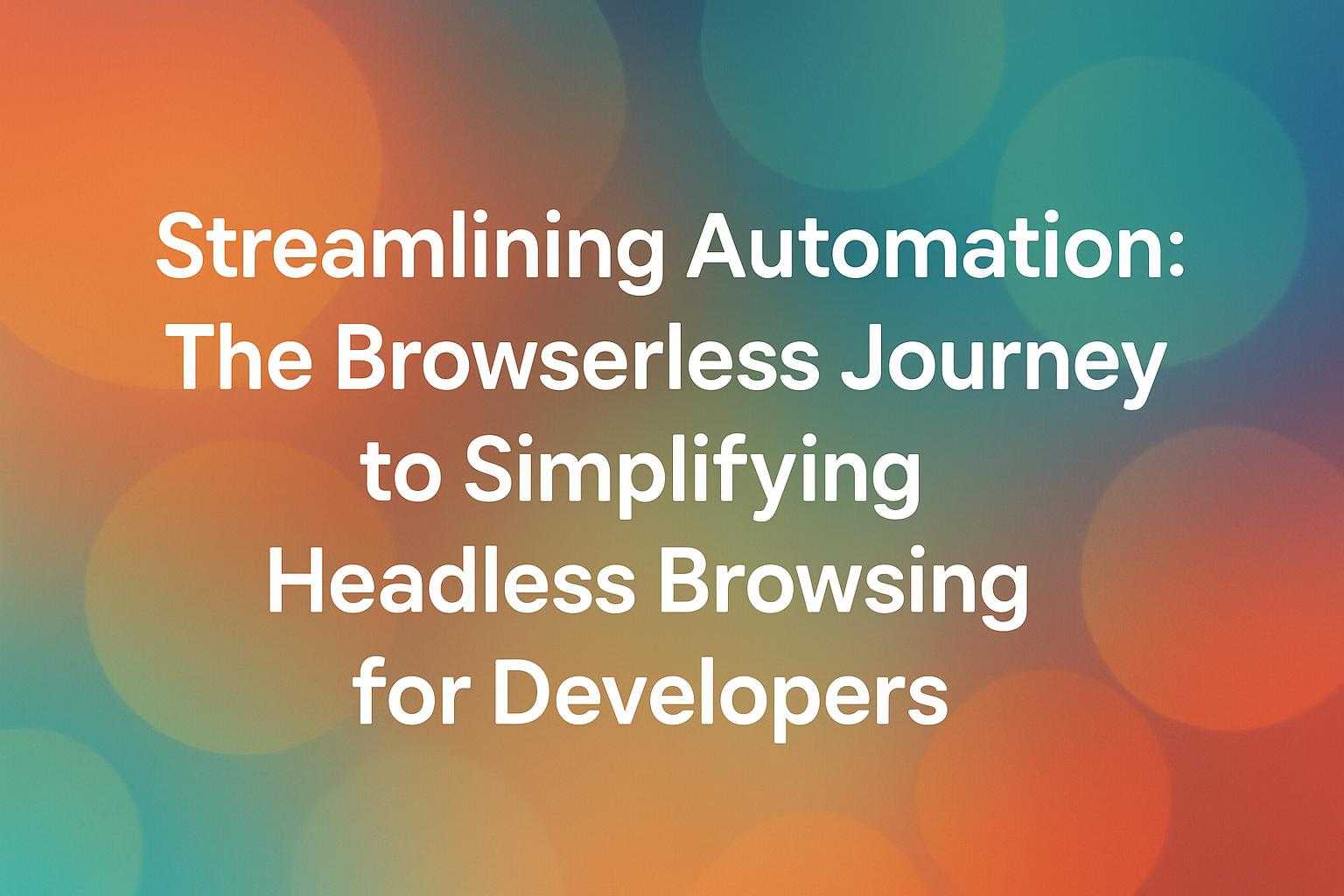Streamlining Automation: The Browserless Journey to Simplifying Headless Browsing for Developers

Company profile
Company business details
Motivation to build the product
The founders were motivated by the complexities and challenges developers face when implementing headless browsers for web scraping and automation tasks. They recognized the need for a streamlined solution that would allow developers to focus on building applications rather than managing browser infrastructure.Problem that their product solves
Browserless solves the problem of complex browser-related tasks, such as web scraping and PDF generation, by providing a hosted solution that operationalizes Headless Chrome. The end users are developers who require efficient automation tools without the overhead of managing their own server infrastructure, making it important for them to have quick and reliable access to browser functionalities.Their unfair advantage
Browserless's unfair advantage lies in its ability to provide a fully managed headless browser service, allowing developers to automate tasks without the need for extensive setup or maintenance of server infrastructure.Strategies
Pre-Launch (Product Development & MVP)
Pre-Selling to Validate Idea
Joel Griffith utilized a pre-selling strategy to validate his startup idea, Browserless, by offering a service that allowed developers to have programmatic control over a web browser. He priced the service at $80, which included a free 1-hour consultancy call. This approach not only generated initial revenue but also provided valuable feedback from early adopters, helping him refine the product before its official launch.
Identifying Market Needs through Open Source Projects
Joel Griffith, the founder of Browserless, emphasized the importance of finding a big open-source project that many people are using. He suggested looking for common issues within that project to identify potential solutions. This approach led him to create Browserless, as he noticed that many users were struggling with running Headless Chrome in their environments. By addressing these pain points, he was able to develop a product that catered to a specific need in the market.
Rapid Development with Existing Tools
Joel focused on using familiar technologies to build browserless quickly, opting for JavaScript and leveraging tools like Stripe for payment processing, DigitalOcean for hosting, and Docker for containerization. This approach allowed him to minimize development time and costs, ensuring that he could launch the product without external funding.
Launch Stage
Leveraging Developer Networks
Joel Griffiths strategically cultivated the initial user base of browserless from his existing connections within the developer community. By collaborating on projects like puppeteer, chromeless, and navalia, he tapped into a ready pool of developers who were already familiar with the challenges of headless browsers. This not only validated his idea but also provided early feedback and refinement, creating a strong foundation for the product's launch.
Platform Launch and Community Engagement
Joel launched browserless on prominent platforms such as Hacker News, Reddit, and GitHub. However, recognizing the specialized nature of the service, he found limited visibility on traditional platforms. Instead, he engaged with the community by actively participating in discussions on StackOverflow and GitHub, providing valuable insights and solutions to common problems faced by developers. This approach built credibility and generated backlinks that contributed to search engine optimization (SEO).
Learn more about Browserless

A "Headless" Automation Tool Making $93,000 MRR

Browserless: Making $4,000/month With the Chrome-As-A-Service




